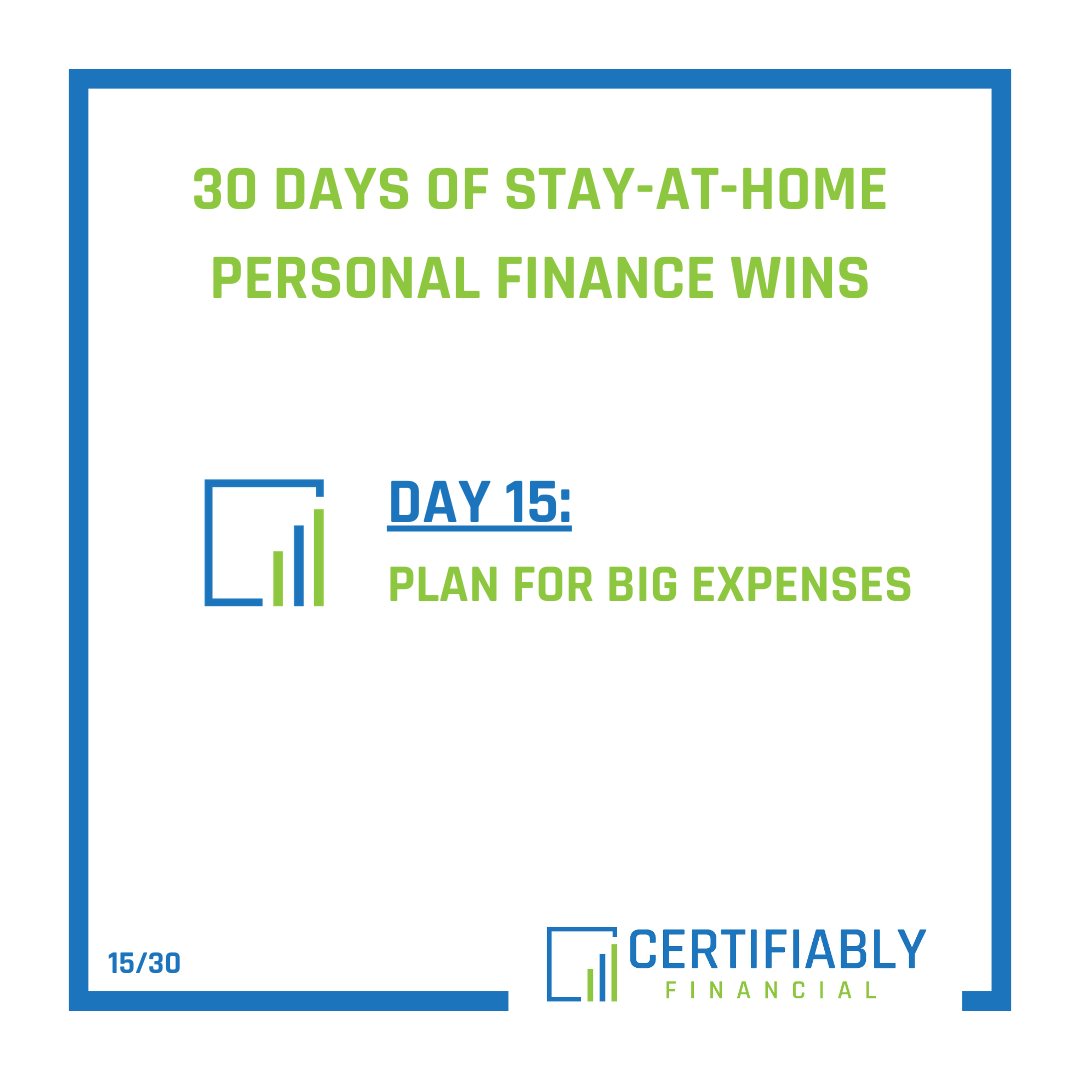What if you were able to come out of this time of social distancing and economic crisis with a stronger and healthier financial life? What if you looked at this as an opportunity to take a little bit of your extra time each day to work on your finances?
Since it takes me about 35 minutes to drive to work in the morning and 45 minutes on the way back home, I have an extra 1 hour and 20 minutes of my day that I don’t have to drive while I’m working from home that I can use to accomplish something. This doesn’t even take into consideration all of the networking and social events that would usually take up some of my time throughout the week.
Obviously, your situation is different than mine (and probably a whole lot different if you have kids at home who would otherwise be in daycare), but I’m guessing that we all have at least a little extra time right now that we can dedicate to our personal finances.
It looks like we’re going to continue to practice our social distancing skills at least through April, and now is a great time to work on creating a better financial situation, so I’m giving you 30 days of stay-at-home personal finance wins throughout April.
Unfortunately, I understand that there are many who have (and who will) lose their jobs during this time of uncertainty and objectively will not come out on the other side of this with a stronger financial situation. Hopefully, many of these personal finance wins can help to lessen the blow and make things easier on them. On the other hand, I think that many of these wins are still relevant to those who are fortunate enough to be in a position to not have to worry about their job and their finances to help them build a healthier financial life.
Day 15: Plan for Big Expenses
You’re going to have a big expense at some point whether that’s an auto insurance premium that you pay annually or semi-annually, a vacation, holiday presents, or something else that doesn’t happen often. If you’ve kept your job and you’re working from home, then you’re probably saving a lot of money that you were spending before. Now is a great time to think about how to use that extra cash to plan for big expenses like those mentioned above and also figure out how you can continue to save for big expenses once we get back to normal.
Instead of setting aside some money from each paycheck to save for expenses like vacations and holidays, most people ignore the big expenses and then have to dip into their savings or use a credit card to pay for them once the time comes.
A great way to plan for these expenses is to include sinking funds in your budget. Using a sinking fund will mean that you’ll identify the large expenses that you’ll have throughout the year and you’ll set aside some money each month or each time you’re paid to save for them. Of course, this only works if you actually adjust your spending and set aside the money each month so that you know it’s there once you need it.
Here are 4 easy steps to do this:
- Figure out how much you need to save for a future expense. (For example, $500 for Christmas gifts.)
- Determine how long until you need the money. (Let’s say you need it by November 15.)
- Figure out how many times you’ll be paid between now and then. (For an easy example let’s assume you’re paid once per month on the last day of each month. So, you’ll receive 7 pays between now and November 15).
- Divide the amount you need to save by the number of times you’ll be paid to figure out how much of each pay you need to set aside for your goal. (In this example, you’d need to save $71.43 per pay.)
It’s really easy to spend all of your take-home pay and not save for those large expenses that you don’t have to pay for each month. It’s much harder, but much more financially savvy, to add those expenses into your budget as sinking funds that you save towards.
30 Days Of Stay-At-Home Personal Finance Wins
- Day 1: Understand The CARES Act
- Day 2: File for Unemployment or Short-Time Compensation
- Day 3: Request Forbearance
- Day 4: File Your Tax Return (Maybe)
- Day 5: Commit to Yourself
- Day 6: Practice Financial Distancing
- Day 7: Don’t Panic
- Day 8: Create An Online Shopping Strategy
- Day 9: Find & Store Your Login Information
- Day 10: Review Your Spending
- Day 11: Free Up Cash Flow
- Day 12: Automate Bill Payments
- Day 13: Plan To Increase Your Emergency Fund
- Day 14: Update Your Beneficiaries

